(As always, the opinions expressed in my posts are my own and do not necessarily represent the views of RedState.com.)
Things on the ground are pretty stable as we enter Week 40 of Vladimir Putin’s four-day demonstration of shock and awe. That is not to say nothing is happening because that is not the case.
Politico-Strategic Level
Russia Decides to Call a War a War
Semantics are always important in war. While fighting in Korea, it was a “conflict” or “police action.” Richard Nixon’s (correct) decision to plow into Cambodia to interdict North Vietnamese logistics was called an “incursion.” That word was chosen, it was rumored, because unlike “invasion,” it didn’t have a verb form that sounded threatening.
Russia has been rigorous about calling its illegal war in Ukraine a “special military operation.” Vladimir Putin signed a decree specifying that calling the war in Ukraine a “war” to be a crime under the heading of “discrediting the Russian military.” People were arrested and jailed for this offense. However, now that Russia is mobilizing reservists for duty, that policy seems to be slipping.
The confirmation we didn't need. Russian Foreign Minister Sergei Lavrov for the first time publicly called the invasion of the Russian army on the territory of Ukraine "war". pic.twitter.com/5M0fy5Ph6f
— NOËL 🇪🇺 🇺🇦 (@NOELreports) December 2, 2022
I suspect that if the war still exists by spring, the term “special military operation” will be abandoned because it is ridiculous.
OSCE Meets Without Russia
The Organization for Security and Cooperation in Europe (OSCE) is one of those Cold War organizations, like NATO, that has gotten a new lease on life thanks to Russia’s behavior. The OSCE is headquartered in Austria and has observer status at the UN. Its 57 member nations are supposed to coordinate Europe’s response to arms control, promotion of human rights, freedom of the press, and free and fair elections. The very fact that Russia is a member lets you know just how useful it was.
Currently, Poland holds the rotating presidency, and its annual meeting is scheduled for Warsaw. Then Poland decided not to allow sanctioned Russians into the country to participate. This included Russia’s Foreign Minister Sergey Lavrov.
Poland has not referred to the travel ban but to sanctions. We can't accept sanctioned Russian delegates on our territory as long as the reasons for these sanctions don't cease to exist. Russia is invited to the OSCE MC and according to my knowledge intends to attend. @PLinOSCE https://t.co/NgYU0E6Lxf
— Łukasz Jasina (@RzecznikMSZ) November 24, 2022
During the meeting, Moldova’s foreign minister demanded that Russia withdraw its troops from Transnistria as it had promised to do some decades ago.
of the Russian military from the territory of the Republic of Moldova in accordance with the commitments made by the Russian Federation in 1999 at the OSCE summit in Istanbul," said the Minister of Foreign Affairs of Moldova Nick Popescu.
— NOËL 🇪🇺 🇺🇦 (@NOELreports) December 1, 2022
This signals the diplomatic isolation that Russia’s Ukraine adventure is causing and shows that a decoupling of Russia from Western security and economic systems is probably inevitable. Russia is no longer perceived as a major military power, it is no longer considered a viable partner for security and economic agreements, and it is shut out from any ability to defend itself in the forums where it is attacked.
The Germans Are No Longer In Russia’s Corner
Germany, of all Western countries, has been the most solicitous about Russia’s hurt feelings and the least aggressive in helping Ukraine. According to former British Prime Minister Boris Johnson, the German government was cheering on an early Russian victory as a good thing. Germany has provided some weapons systems to Ukraine, but they are defensively focused. Germany has intervened to stop the transfer of even obsolescent offensive equipment, like Leopard 1 tanks and Marder infantry fighting vehicles, from other countries to Ukraine. At times, German Chancellor Olaf Scholz seemed to be embracing his early political career as a Russian stooge, going out of his way to kowtow to Putin.
In the last week, things have changed.
Yesterday, Scholz and Putin spoke via telephone. According to the German readout of the conversation, Scholz condemned the Russian attacks on Ukraine’s civilian infrastructure and urged Putin to withdraw Russian troops from Ukraine as a prelude to negotiations.
German government spokesman: Scholz urged Putin to solve the conflict with Ukraine through diplomacy and to withdraw troops from Ukraine https://t.co/Dlk3fZAAig via @AJABreaking #Ukraine
— Liveuamap (@Liveuamap) December 2, 2022
This parallels Scholz’s statement at a press conference in Cyprus two weeks ago, where he said Russia can no longer win its war in Ukraine. Scholz seems to think that if the war is over, everything will return to status quo ante. My personal feeling is that we are beyond that point.
No time to comment on this in detail today, but this is staggeringly poorly thought out. The pre-war European security order is as completely gone as the post-WW1 order was in 1940. It is never coming back. https://t.co/FR2ixYYpcZ
— Ruth Deyermond (@ruth_deyermond) December 1, 2022
Negotiations
The Ukrainians have set the withdrawal of all Russian troops to status quo ante February 24 as a precondition for negotiations. The Russians have now made a counteroffer:
Russia now wants its annexations of four Ukrainian regions to be formally recognized before talks can begin
Russia is effectively asking Ukraine to give up territories of Donetsk, Zaporizhzhia and Kherson that Kyiv holds. A total non-starter
— Samuel Ramani (@SamRamani2) December 2, 2022
This might be great trolling to impress the Douglas MacGregor branch of the GOP and various Russian stooges on social media, but it is hardly a serious reflection of the situation on the ground. My earlier supposition that Russia would try to compensate for battlefield weakness by attacking Ukraine’s alliances by appearing reasonable versus Zelensky’s intransigence was wrong. The Russian leadership is just not very bright when dealing outside the Russian domestic audience.
Russia’s Cozy Relationship with Iran Threatened by Israel
This war has had plenty of odd occurrences. None is so bizarre as seeing Russia turn to Third World pariah states for military supplies. I reported earlier on winter uniforms for the Russian Army being manufactured in North Korea. Russia is buying helmets, plate carriers, and ballistic inserts for those vests from Iran. Iran has been supplying Russia with suicide drones and is in negotiations with Russia to open a production facility for those drones in Russia. It has also been rumored that Iran will supply Russia with short- and intermediate-range ballistic missiles.
Israel has not provided military assistance to Ukraine. But it doesn’t seem happy about the idea of Iranian missiles being sold to Russia.
If this is, in fact, what Israel is telling RU (along with other possible Israeli weapons systems), I doubt we’ll see IRA ballistic missiles delivered to Ru. Add risk it wld mean US/allies delivering ATACMS or Patriots. Also signs of fewer Iranian UAVs, maybe bc of ISR pressure. https://t.co/3tpEB1KGkd
— Edward W. Walker (@gnuggat1) November 28, 2022
I think Israel will send aid to Ukraine if the war drags on for another few months. The Iron Dome system is precisely what is needed to defend critical infrastructure from Russian attacks without having to divert combat units. In the meantime, interfering in the weapons trade between Russia and Iran is a significant “in kind” contribution.
Ukraine’s Power Grid Soldiers On
For the last couple of months, Russia’s apparent strategy has been to try to force Ukraine to stop fighting by striking at the will of the Ukrainian people. Earlier in the war, Russia carried out what can only be called terror attacks on cities. When these attacks produced no military results and a lot of bad publicity, the targeting switched to the electrical grid, steam heating plants, and water works.
The same nations who are arming and supplying Ukraine with weapons and military-related supplies are not running a consortium to supply parts to keep Ukraine’s electrical grid functioning.
As Russia tries to plunge millions into the cold and dark, @SecBlinken announced > $53 million for equipment to keep Ukraine’s electricity grid up and running and help Ukrainians persevere this winter, despite Russia’s horrific attacks.🔽 https://t.co/ypqQiggawZ
— Ambassador Bridget A. Brink (@USAmbKyiv) November 29, 2022
"At least a quarter of Ukraine’s energy network is now damaged, U.S. officials say, compared with less than 5 percent before Russia embraced its apparent shift in tactics last month." via @missy_ryan @emilyrauhala https://t.co/ysTw1jR8GL
— John Hudson (@John_Hudson) November 29, 2022
One of the sidebars to this is that Russia has rolled out a public relations campaign to convince the truly stupid that the infrastructure attacks are to stop Ukraine’s electrical locomotives from moving.
Russia's Rybar Telegram channel says Russia's civilian infrastructure strikes aim to disrupt military cargo transfers
Ukraine will be forced to rely increasingly on diesel locomotives, which have limited stocks, and be unable to resupply its military
— Samuel Ramani (@SamRamani2) November 29, 2022
Rybar is a quasi-official Russian military account on Telegram. I’ve used them in my coverage before. This doesn’t explain Russian television hosts explaining the purpose of the attacks is to deprive Ukrainian civilians of electricity, heat, and water. Neither does it justify the strikes on waterworks and heating plants. But I’m sure I’ll get educated in the comments by the usual suspects.
Artillery Repair Center in Poland
The war in Ukraine is and has been, an artillery war. Prodigious quantities of ammunition are shot, and drones and counter-battery fires target artillery pieces. Even without enemy action, the wear on gun tubes and recoil mechanisms is horrendous.
Ruptured barrel of 🇺🇦#Ukrainian 152mm howitzer D-20 (M1955).
Barrels of cannons and howitzers exceed their service life, often using inferior ammunition, resulting in a ruptured barrel. pic.twitter.com/JBCxN8T8qJ
— 𝕻𝖗𝖆𝖎𝖘𝖊 𝕿𝖍𝖊 𝕾𝖙𝖊𝖕𝖍 (@praisethesteph) October 26, 2022
The US has announced that it will open a field artillery repair center in Poland.
Over to the general events. The United States is setting up a repair center in Poland for artillery supplied by Western countries, since due to wear and tear, about a third is already in unusable condition. pic.twitter.com/xXIh0F8Jqc
— NOËL 🇪🇺 🇺🇦 (@NOELreports) November 26, 2022
Like any US Army repair depot, the facility will undoubtedly be staffed by civilian technicians who know their business. It will also be an excellent opportunity for tech transfer to Poland and Ukraine.
Ukrainian Arms Industry Comes Back
Before the invasion, Ukraine had a small and ingenious domestic arms business. Its stock in trade was modifying the Russian trash that it had into inexpensive systems nearly as effective as much more costly Western weapons. However, with a little breathing room due to Western assistance, the Ukrainian arms industry is showing signs of life.
One of the threats to both sides in this war is the consumption of artillery ammunition. According to some estimates, both sides shoot more artillery ammunition in two weeks than the UK’s stockpile to fight a full-scale war. While the West provides several hundred artillery systems and ammunition, that is all in the NATO standard 155mm. Most of Ukraine’s tube artillery and all of Russia’s are 152mm. Russia is buying ammunition from North Korea. NATO has scoured the Third World for 152mm. Ukraine’s primary supplier is…drumroll…Iran. But the US is standing up manufacturing facilities to fill the void.
US plans to invest in defense companies in Bulgaria, Slovakia, and the Czech Republic so they can produce more Soviet-calibre (152mm and 122mm) guns and ammunition to support Ukraine.#UkraineRussianWar pic.twitter.com/E3OMkpmjWH
— Venkatesh Ragupathi (@venkatesh_Ragu) December 2, 2022
Now Ukraine’s ammunition production is cranking up.
This is HUGE⬇️⬇️ Ukraine has a literal shit ton of antiquated Soviet era 152mm artillery and almost no ammunition for it. Here's hoping for insanely high production rates. #ArmUkraineNow https://t.co/lAbEPKPru5
— Chris Zuby (@ChristopherZuby) November 29, 2022
As would be expected, the details are classified, but the fact that Ukraine is starting to make artillery ammunition is a good sign.
In addition to artillery ammunition, we are starting to see images of a homegrown Ukrainian Multiple Launch Rocket System called the Bureviy or Storm. It is a more sophisticated version of the Russian 220mm “Uragan.”
AFU Burivey 'Storm' MLRS
Great photos of the system which has only popped up on media a handful of times in the past three months.
— | osint_east | (@osint_east) December 1, 2022
The fire control system is much more capable and can link to data from drones. Unlike the Russian version, the Storm’s crew doesn’t have to leave the crew compartment to aim the rockets. Unfortunately, it still has to be loaded and the rockets fuzed by hand, so it can only fire once every 20-30 minutes.
Wagner Group Designated Terrorist Group
This war has raised the profile of the Wagner Private Military Company (PMC). Where it has once been shadowy and confined to conflicts where Russia didn’t have forces and its owner, Putin crony Yevgeny Prigozhin, disavowed connection with it, its star is now in its ascendancy. Wagner has a flashy headquarters in St. Petersburg, and Prigozhin touts his affiliation with the PMC. The last update I posted on the execution by sledgehammer of a Wagner soldier who’d defected to Ukraine.
There is a push in several places to declare the Wagner Group as a terrorist organization.
NEW — the #Biden admin is considering designating #Russia's Wagner Group as a terrorist organization, per @DanielPFlatley & @StephaniBaker.https://t.co/QaLxKRspLA pic.twitter.com/J5Y4lheCGU
— Charles Lister (@Charles_Lister) November 29, 2022
My gut is that this is a monumentally bad idea. I don’t think the Wagner Group violates the UN convention on the use of mercenaries. Even if it did, it would be up to Ukraine to punish individual Wagnerites. What happens when some country declares Delta for the SEALs to be a terrorist group? Do we want to go down that road for no appreciable benefit?
Abducted Racoon Fights Back
In my last update, I posted about the abduction of animals from the Kherson Zoo when the Russians absconded from the area. Since then, the Russians have claimed the raccoon as the mascot of their airborne forces, and the Russian embassy in South Africa held a name-that-raccoon contest on Twitter.
#Russia’s embassy to South Africa is running a poll on what to name the raccoon stolen by the Russian occupiers in Kherson, Ukraine.
Option 2 – region of Ukraine illegally occupied by Russia since 2014.
Option 3 – a chemical agent used by Russia for attacks in the UK. pic.twitter.com/hKr5UKdocV
— Alex Kokcharov (@AlexKokcharov) November 23, 2022
It also led to some sorta funny memes.
Before retreating, Russians stole a raccoon from Kherson zoo.
I don't know why, we're all guessing. My favourite version is that the raccoon was a true goal of Russia's "Special Military Operation".
So now Putin can declare victory.
But we are seriously worried for our raccoon. pic.twitter.com/DzXzZIwhwp— Victoria Amelina 🇺🇦 (@vamelina) November 13, 2022
The raccoon reappeared in a video last week and showed itself to be unhappy. In the photo op, it nearly took a finger off the hand of the Russia-appointed head of the Kherson Military-Civilian Administration, Volodymyr Saldo.
Our raccoon, who was abducted by the occupiers from the Kherson zoo not so long ago, continues his courageous struggle. In this video, the furry almost bit off the finger of collaborator Saldo. pic.twitter.com/5ouY6tf0bC
— ТРУХА⚡️English (@TpyxaNews) December 1, 2022
Operational Level
The lines are essentially unchanged again. As the weather turns cold and the ground mercifully freezes, I think that will change around the first of the year.
New Weapons
Weapons Donations
Ukraine is dependent upon weapons donated by other countries. It is interesting to note that Russia is the single largest contributor of military equipment to Ukraine. This is not equipment the Ukrainian Army had when the war started. These vehicles have been verified by video and imagery to have been abandoned or captured in combat.
Russia left $2 billion worth of equipment in Ukraine pic.twitter.com/StRFCeohQE
— ТРУХА⚡️English (@TpyxaNews) November 28, 2022
Early in the war, Ukrainian farm tractors towing away Russian tanks provided the iconic image of the war.
📽️🇺🇦 Ukrainian tractor unit captured Russian T-80U tank #Ukraine #UkraineRussiaWar pic.twitter.com/h5OKQ9JPjo
— MilitaryLand.net (@Militarylandnet) March 8, 2022
Ukrposhta to put the stamp "Good evening, we are from Ukraine" on sale on 28 July
There will be 5 million copies of this postal stamp featuring a Ukrainian tractor towing the Russian tank.https://t.co/zGgus2htRl pic.twitter.com/K17RM0sQwm
— Euromaidan Press (@EuromaidanPress) July 24, 2022
It wasn’t a joke.
Ground Drones
Germany is providing 14 THeMIS Milrem Robotics drones designed to transport the wounded and cargo.
They may be “designed” to deliver cargo and evacuate wounded, but it doesn’t take a genius to see the possibilities if a few anti-tank missiles and maybe a grenade launcher are slung on it.
Training
Poland Increases Training of Ukrainian Troops
The first exercises for the Armed Forces of Ukraine began in Poland, in total, the Polish government pledged to train 15,000 Ukrainian military pic.twitter.com/pv9EJmCBEO
— NOËL 🇪🇺 🇺🇦 (@NOELreports) November 29, 2022
US Provides Combined Arms Training for Ukraine
While the initial training focused on a few specific weapon systems (M777, HIMARS, etc), this training would focus on collective training for combined arms maneuver. Everything from mounted gunnery, advanced artillery employment, to more complicated training is now on the table.
— CJ (@CasualArtyFan) November 30, 2022
Prisoner exchanges
50 heroes mostly from Mariupol/Azovstal returned. pic.twitter.com/l3E73cxaOF
— NOËL 🇪🇺 🇺🇦 (@NOELreports) December 1, 2022
Ukraine's SBU published footage of today's prisoners exchange.
Today, 12 Ukrainians returned home. pic.twitter.com/pJySxyDLDp
— Russia Ukraine Conflict (@Russiaconflict) November 26, 2022
Combat Operations
Tactics, Techniques, and Procedures (TTP)
Putin’s War in Ukraine has been the first large-scale drone war. The possibilities have been showcased in lower-intensity warfare between Azerbaijan and Armenia. But Ukraine is bringing the drone mainstream. Here you have a Ukrainian drone controlling the fires of a Mark 19 40mm grenade launcher team.
Excellent work of Ukrainian 'SIGNUM' division with DJI Mavic 3 and MK-19 grenade launcher, Bakhmut direction. pic.twitter.com/ya65LkpzXD
— ТРУХА⚡️English (@TpyxaNews) November 28, 2022
Kharkiv
There were no significant military operations in the Kharkiv area. However, there was some limited skirmishing around Svatove that could be the beginning of a shaping operation.
This image is four days old because nothing has changed; I’m using it because I hate people who throw around placenames and don’t use a map.
The #Ukrainian General Staff reported that the Russian forces along the #Svatove-Kreminna line are conducting defensive operations around #Kupyansk and offensive operations west of #Kreminna. pic.twitter.com/8WUuBxTM0f
— Critical Threats (@criticalthreats) November 28, 2022
Donbas
There have been no significant changes in the line of contact in the Donbas area. Both sides are locked in a death grip in and around Bakhmut.
Russian forces continued to make incremental gains around Bakhmut and to conduct offensive operations in the Avdiivka-Donetsk City area. pic.twitter.com/cLQ4PFGgmO
— Critical Threats (@criticalthreats) December 2, 2022
Both sides have started using Verdun imagery and references. Every couple of days, the Russian accounts on Telegram proclaim that Bakhmut and neighboring towns have fallen. The fact of the matter is that a lot of the towns change hands daily, if not more frequently.
Here's Ukraine's take on the Verdun analogy. This information war is likely to intensify, as both Russia and Ukraine pour more forces to Bakhmut and try to leverage the stalemate to their advantage https://t.co/3hyoEoi4Ko
— Samuel Ramani (@SamRamani2) November 28, 2022
As I’ve said before, I don’t see what this battle gets anyone other than the bragging rights of having held the ground. That, in my view, is rarely a good enough reason to kill one’s own men. I think the Russians have made taking Bakhmut and the nearby towns a point of honor to compensate for the last three months of failure. The Ukrainians feel honor-bound not to let the Russians win.
Kherson/Zaporizhzhia
I’m going to continue to treat these two areas as one, as it makes more sense to look at the emerging area of operations as occupied Ukraine on the left bank of the Dnieper.
There is some interesting stuff happening in this area of operations. For example, in the last update, I posted about a defensive belt the Russians are constructing along the highway from Melitopol and Nova Khakovka.
Last update, the Russians were preparing positions around Melitopol. This week, via commercial satellite imagery, we see a series of defensive lines being developed along the E58 highway from Melitopol to Nova Kakhovka.
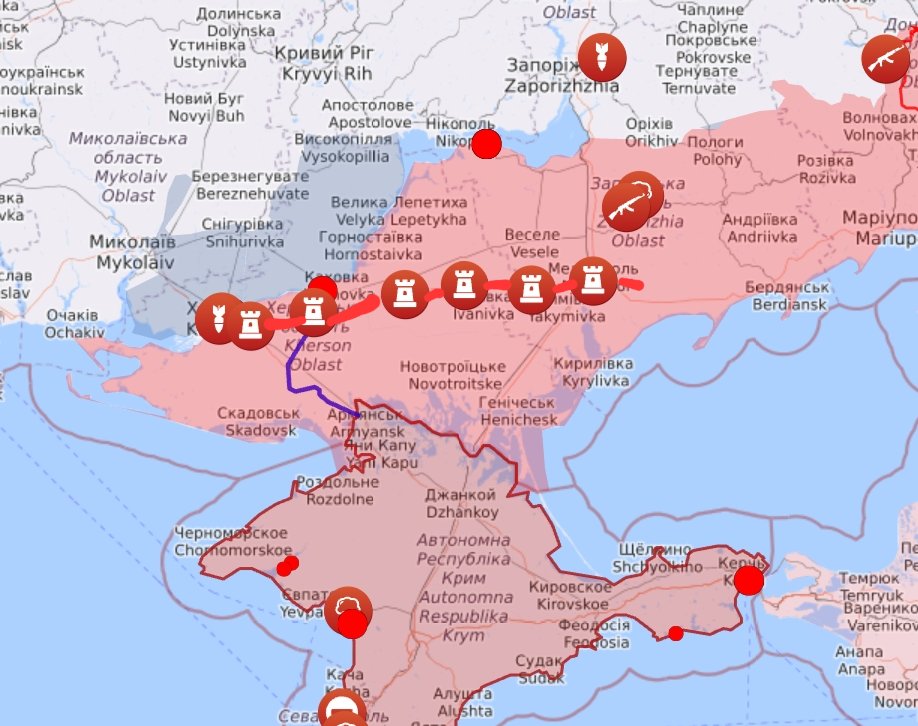
I don’t have the imagery, so I can’t make inferences, but it looks like the line is situated to prevent any Ukrainian breakthrough towards Melitopol from threatening Crimea. Does this imply that Russia is preparing to sacrifice the area north of the defensive line and conduct a planned retrograde operation from the existing front line? Because the Russians don’t have enough troops to man the current front and simultaneously defend the line, they are building. If they don’t, then should a breakthrough take place, the odds of being able to stop a retreat fast enough to man the defensive line are pretty slim.
Russian sources report that the Russian-installed civil government will move from Nova Khakovka to points south. If you recall, the quisling administration in Kherson moved out of that city about a month before the Russians abandoned it.
GREY ZONE states that Nova Kakhovka temporary "administration" will start "evacuating" residents on Saturday 3 December.
Meanwhile, my source in Nova Kakhovka also says the military commandant administration will stop working on 3 December, and leave the city. pic.twitter.com/RCPXrJ1fVR
— Dmitri (@wartranslated) December 2, 2022
There are indications that the Russians are thinning out their front lines to man the defensive belt. However, as of now, these reports lack confirmation.
KHERSON AXIS/ 2345 UTC 1 DEC/ UKR official sources report that some component units of the RU 429th Motorized Rifle Regiment and the 141st Guards Tank Battalion appear to be repositioning south from Mykhailivka, Polohy and Inzhenerne in the Zaporizhzhia region. Developing. pic.twitter.com/58kdibXXXx
— Chuck Pfarrer | Indications & Warnings | (@ChuckPfarrer) December 1, 2022
Partisan Activity
Mariupol
There is no word on the identity of the targets, only that the bomb went off outside the Russian administrative headquarters in Mariupol.
A member of the Russian occupation administration was killed in a car explosion in #Mariupol, another two Russians sustained injuries. One of them has been hospitalised in Donetsk with severe burns.
-Petro Andriushchenko, advisor to the mayor of Mariupol pic.twitter.com/0wfNgYR0JU
— NOËL 🇪🇺 🇺🇦 (@NOELreports) November 26, 2022
Tokmak
The caption reads via auto-translate:
“In Tokmak, the car of collaborator Alexei Koshel was blown up. At the occupiers, Koshel was the so-called “head of the UVD [editor’s note: internal security].” He is reported to have died in a blown up car. Before the war, Koshel worked in the military, but during the war he wanted to betray the oath and go to the servants of the Russians.”
💥В Токмаку підірвали автівку колаборанта Олексія Кошеля 👏
У окупантів Кошель був так званим "начальником УВД". Повідомляють, що він загинув у підірваний автівці.
До війни Ковель працював у військоматі, але під час війни заволів зрадити присязі і піти в прислужники до росіян🤷♀️ pic.twitter.com/Al065q03v5— Європейське Запоріжжя (@ESZaporizhzhia) November 30, 2022
Zaporizhzhia Nuclear Power Plant (ZNBPP) Security
Rumors from multiple sources indicate that Russia, Ukraine, and the IAEA have agreed on a plan to demilitarize the ZNPP and the surrounding area.
RU is ready to leave the territory of the occupied Zaporizhzhia Nuclear Power Plant in exchange for uninterrupted transit of oil and gas through Ukraine.
Source: Latvia-based Russian media outlet Meduza, citing two sources close to the Kremlin that spoke on condition anonymity pic.twitter.com/0dyNZmYNWx
— Ukrainian News24 (@UkrainianNews24) December 2, 2022
What’s Next?
Winter is coming, as Putin’s booklicks like to say on Twitter. But this is not going to be another Operation Bagration. If it has a historical analog, it will be much closer to the fate of the Red Army in Finland’s birch forests in the winter of 1939-1940.
We are at stasis until the mud freezes. Quantitatively and qualitatively, I still believe that the correlation of forces heavily favors Ukraine. Ukraine has interior lines of communication. The throughput of its training base in the UK and Germany is about 15,000 soldiers per month with basic soldier skills. The Ukrainians appear, at least from social media, to be rotating units out of forward positions and permitting home leave. There is no evidence that the Russians can train the “mobilized” forces or even equip them to survive the winter. Really, there is no indication that they intend to use the mobilized forces as anything but cannon fodder to prevent the Ukrainian front lines from resting. In the absence of any catastrophic change in that correlation, I think we can expect a mid-winter offensive by Ukraine.
The Russian defensive belt in Zaporizhzhia and Kherson and rumors of a thinning of Russian front lines could indicate that Russia has decided it does not have the troop density to defend the current front line and is moving to shorten it. This will entail abandoning most of occupied Zaporizhzhia and attempting to retain a narrow corridor along the Black Sea from Russian-occupied Donetsk to Crimea. I don’t think this will work because, in the words of General George S. Patton, Jr., “Fixed fortifications are a monument to the stupidity of man.”
Another possibility is that this likely shortening of defensive lines may be related to the seemingly mindless slaughter around Bakhmut. It will be difficult for Putin to walk back the invasion’s maximalist goals. Maybe the thought is creating a much-reduced land bridge and making some territorial gains in Donetsk will create a fig leaf of success to mask the abject failure of this military adventure.
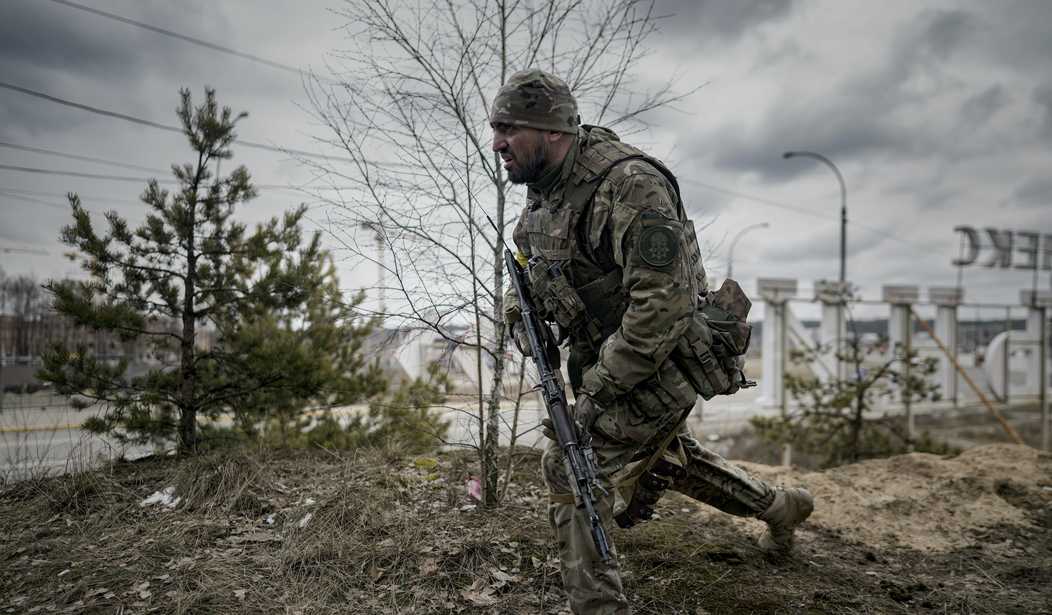


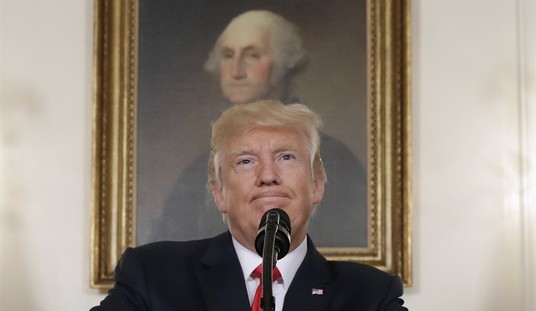







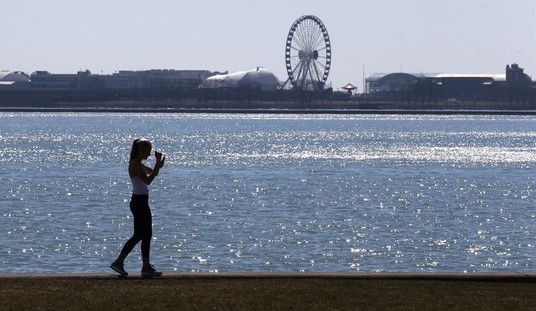

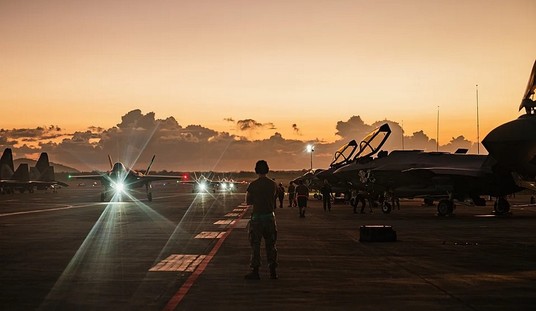
Join the conversation as a VIP Member